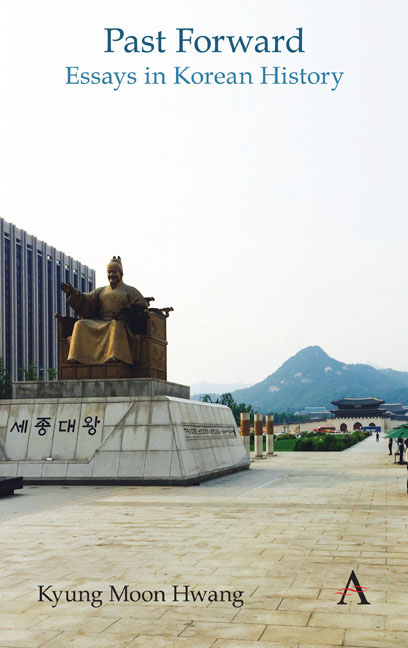Book contents
- Frontmatter
- Contents
- List of Figures
- Foreword
- Chronologies of Korean History
- Themes
- Acknowledgments
- Note on Romanization and Spelling
- Part I Circulating History
- Part II Durable Traditions
- Part III Ancient Remains
- Part IV Dynastic Depths
- Part V Modern Origins
- Part VI Challenges of Nationhood
- Part VII History Makers
- Part VIII External Presences
- Part IX Trials of Modernization
- 62 Summer Symmetries
- 63 The Korean War as a Turning Point
- 64 The Students of April
- 65 The Four Ds of South Korean History
- 66 Two Assassinations
- 67 Roads to Revolution
- 68 Dramatizations of the Gwangju Uprising
- 69 The Great Labor Uprising of 1987
- Part X Gripped by the Past
- Index
69 - The Great Labor Uprising of 1987
from Part IX - Trials of Modernization
- Frontmatter
- Contents
- List of Figures
- Foreword
- Chronologies of Korean History
- Themes
- Acknowledgments
- Note on Romanization and Spelling
- Part I Circulating History
- Part II Durable Traditions
- Part III Ancient Remains
- Part IV Dynastic Depths
- Part V Modern Origins
- Part VI Challenges of Nationhood
- Part VII History Makers
- Part VIII External Presences
- Part IX Trials of Modernization
- 62 Summer Symmetries
- 63 The Korean War as a Turning Point
- 64 The Students of April
- 65 The Four Ds of South Korean History
- 66 Two Assassinations
- 67 Roads to Revolution
- 68 Dramatizations of the Gwangju Uprising
- 69 The Great Labor Uprising of 1987
- Part X Gripped by the Past
- Index
Summary
What is often overlooked in commemorating the democratization of 1987 is that the process did not stop with, or was limited to, political liberalization, but included an equally extraordinary mass movement for economic democratization. Stimulated by the events of June, in early July 1987 workers at Hyundai Engines in Ulsan established an independent union in order to demand, collectively, higher wages and better working conditions, as well as the right to organize. This spark led to an epochal firestorm of worker actions across the country that became known historically as the Great Labor Uprising of 1987.
The period between July and September of 1987 witnessed the eruption of over 3,000 strikes and other protests, along with countless new independent unions leading hundreds of thousands of participating workers. In reflecting the reach of the political democratization of June, employees in a wide range of sectors, from bus and cab drivers to journalists and TV producers, established “democratic unions,” associations, and other organizations to claim their economic rights and push for fairer treatment. But it was the factory workers who drove this relentless activity, particularly those who worked for large companies such as the ones in Hyundai Group.
While the founders and managers of these conglomerates gained fame and credit for South Korea's economic “miracle,” their workers served as the foundation of this development for decades under difficult working conditions, with few rights and almost no chances for independent collective action. The authoritarian governments had firmly clamped down on any such possibilities, instead promoting sham company unions that did the bidding of management and, ultimately, the state. Leaders in these two sectors pursued the common interest of maintaining the system of exploiting Korean workers with low wages.
The workers did not necessarily cower, however. Throughout the dictatorship era, laborers ceaselessly attempted to organize themselves, from protests in individual sweatshops to unions representing entire factories or companies. But they were almost always beaten down, often quite literally, by mass firings, threats, and the mobilization of police and thugs. The workers’ battles, in other words, were part of the broader struggle for democracy.
- Type
- Chapter
- Information
- Past ForwardEssays in Korean History, pp. 199 - 201Publisher: Anthem PressPrint publication year: 2019



